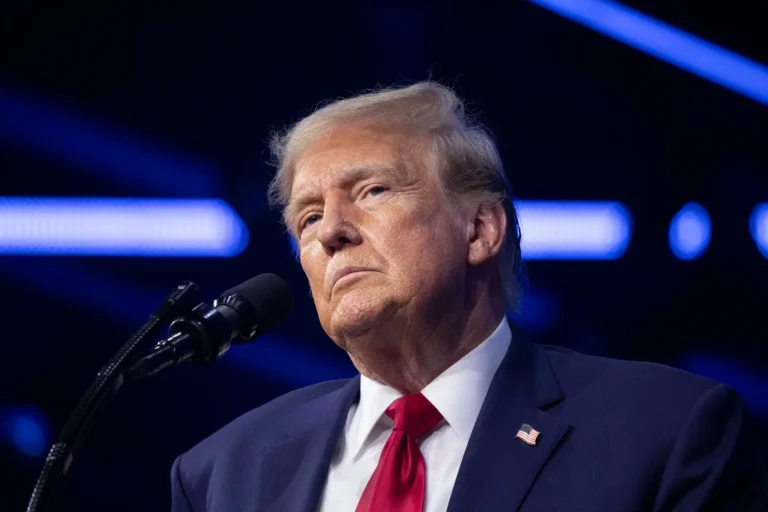3 reasons why Russia’s economy can survive without crisis for up to 5 more years, think-tank economists say

Russian President Vladimir Putin during the BRICS Business Forum in Moscow on October 18, 2024.
Russia’s wartime economy could be in it for the long-haul — or at least longer than expected.
A team of economists is unconvinced that Russia will tumble into economic collapse any time soon, as suggested by some analysts.
Instead, Russia’s economic capability “excludes almost any chance of a serious crisis cause by internal factors in at least three-to-five years perspective,” three authors wrote in a report for the Center for Analysis and Strategies in Europe.
The paper counters notions that a Russian crisis will come as soon as next year, an argument made by economists such as Yuriy Gorodnichenko. The UC Berkley analyst told B-17 that Moscow’s slowing energy trade and dollar shortage would cause the crisis.
Even observers within the country expect struggle in 2025, including the specter of staglfation.
But though Moscow is guaranteed to face challenges at some point, the CASE authors cautioned not to translate hardships into proof of a near-term crisis.
Instead, these three trends will keep Russia resilient, they said:
1. Don’t underestimate domestic demand
According to the report, Russia’s domestic market has been an underrated factor behind the country’s perseverance.
After Moscow’s invasion of Ukraine, local consumption has kept the economy afloat, with domestic demand overtaking exports as a leading growth driver.
“In the construction sector alone in 2023, up to 30 million tons of steel were consumed (the increase from the previous year amounted to 9 percent), while before the war, in 2021, just over 15 million tons were exported,” CASE said.
Moscow’s war efforts boosted the purchasing power of millions, as the need for soldiers lifted wages across the country. With more manpower needed at the front-lined, a rising labor shortage at home furthered the wage trend.
Lower-income Russians benefited the most, as recruited soldiers have largely stemmed from economically-depressed regions. In turn, these households spent heavily on domestically-products essentials.
Meanwhile, wealthier households have benefited from Russia’s high interest rates, which have boosted investment incomes, the report said.
“As a result, in 2022–2024, federal budget revenues from domestic sources were growing faster than oil and gas proceeds, whose share has declined from 40–45 percent of overall revenues in 2014–2019 to 30–35 percent in 2023–2024,” it said.
Demand is also not going away if the war does end soon, the CASE analysts said. On one hand, it shouldn’t be assumed that defense spending will ease once peace returns, given that the Kremlin has indicated plans to keep defense industry production running at elevated levels.
Secondly, returning soldiers will require care, and the subsidy programs that crop up should keep aggregate demand afloat.
2. Sustainable war spending
Some have forecast an immediate recession if Russia’s war in Ukraine ever ends, arguing that the Kremlin’s massive war budget is responsible for the economy’s continued survival.
But Moscow’s swelling war expenditures aren’t unsustainable, CASE said.
Though defense and national security spending will now account for 40% of all federal expenditures, the report noted that the Kremlin has financing options.
For instance, Moscow has a “huge space” in domestic borrowing, given that Russia’s government’s 18.1% debt-to-GDP isn’t significant by modern standards.
At the same time, the government has steadily increased tax burdens on both individuals and corporations. Next year, a long-standing flat income tax rate is set to be replaced by a progressive tax scale.
Nominal business tax rates face an annual increase, equal to about 1 percentage point of GDP between 2023 and 2025.
3. Inflation and labor concerns are non-issues
CASE acknowledged that more spending and higher wages have created an fueled inflation, but said it shouldn’t pose a severe threat.
As price growth reached 8.54% in October, that’s good news for Moscow, as single-digit inflation won’t trigger a slowdown. Instead, it will most likely be treated as a “new normal.”
Russia can also expect labor relief over time. Though the country was estimated to be missing as many as five million workers in 2023, cutting down on excess employment among corporations could free up 2 million workers, CASE estimated.
The report also cited discussions to cut down on easy access to higher education, and potentially make technical colleges a requirement. Changes to migration policy that would bring in more labor are also being pursued.






